





Children's roseola
Short characteristic of a disease
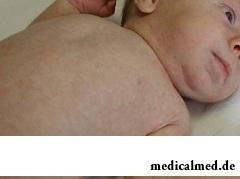 The children's roseola is the infection affecting usually small children, is preferential to two-year age.
The children's roseola is the infection affecting usually small children, is preferential to two-year age.
The second widespread name of a disease – a sudden dieback. Also the roseola as children's fever, the sixth disease and a pseudorubella is known.
Symptoms of a children's roseola often confuse to symptoms of a SARS, rubella or allergy therefore to make the diagnosis can be difficult.
Reasons of emergence of a disease
The reason of a children's roseola – the causative agent of herpes of 6 and 7 types. In adults these viruses cause a syndrome of chronic fatigue, and in children – a roseola. The virus gets into skin and fabrics, causes their damage, infects mononuclear cells, reacts with immune cellular factors and provoke emergence of a dieback (rash on skin).
The disease is eurysynusic among children, but, the infection mechanism nevertheless is not studied. Presumably and most possibly, that the virus causing a roseola, an airborne way is transmitted. An incubation interval – 5-15dn, on average 3-7dn.
Most often the roseola at children and develops in the spring in the fall.
Symptoms of a children's roseola
The roseola the nursery begins with sharp rise in body temperature of the child to 39-40,5grd. Vomiting, cold, cough, the catarral phenomena, changes of a chair is not observed. Temperature remains at the high level 3-5dn, at the same time efficiency of febrifugal drugs is minimum. Critical temperature drop is necessary on 4y day, and through 10-20ch after stabilization of a state on all body there are pink papular spotty rashes which are slightly raised over skin. Rashes on an extent of several hours or days remain.
After rash is shown, rise in temperature is not fixed any more. There passes the dieback without spots and a peeling through 4-7dn.
The characteristic symptom - rash begins to extend with a trunk, later passes to a face, a neck, hands, legs. The most plentiful rashes are observed on the child's body.
Additional symptoms of a roseola: increase in cervical, ear (back) lymph nodes, the child sluggish, badly eats, is irritable. Increase in a liver, spleen is sometimes noted.
In blood increase in lymphocytes, reduction of quantity of leukocytes is observed.
Diagnosis of a disease
Except external survey and assessment of symptoms of a children's roseola, do blood test, sometimes apply serological diagnosis (increase in a caption of immunoglobulin G is observed four times).
Important at diagnosis to distinguish a roseola from medicinal rash, enteroviral not poliomyelitic infections, an erythema infectious, sepsis, otitis, bacterial pneumonia, meningitis, a rubella, measles.
Treatment of a children's roseola
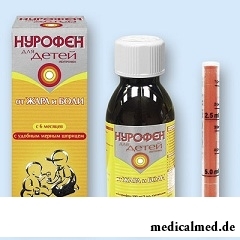 There is no specific treatment of a children's roseola. For simplification of a condition of the child in a rising period it is given antipyretics – paracetamol or a nurofen, watch that there did not come dehydration. The room where there is a sick child, should be aired constantly.
There is no specific treatment of a children's roseola. For simplification of a condition of the child in a rising period it is given antipyretics – paracetamol or a nurofen, watch that there did not come dehydration. The room where there is a sick child, should be aired constantly.
The symptomatic treatment of a children's roseola to children with immunosuppression (oppression of immunity because of recently postponed diseases, stresses) is supplemented with purpose of an acyclovir and foskarnet.
If efficiency of means for removal of heat is minimum and at the child spasms will begin, it is necessary to ask for medical assistance.
Prevention of a disease
In view of the fact that the reason of a children's roseola – infection with a virus, prevention consists only in restriction of contact of the child with the children who are presumably infected with it.
Therefore children at whom this disease is established as well as at other contact infection, it is necessary to isolate to an absolute recovery.
People who got used to have breakfast regularly have obesity much less often.
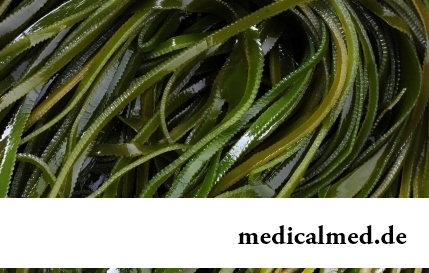
For residents of the countries of Southeast Asia various algas are an obligatory component of a daily diet. Their priest...
Section: Articles about health
Obesity is called a disease of 21 centuries, for the last 100 years the number of the people suffering from excess body weight considerably increased. Statistically, on Earth already about 1,5 billion corpulent people, and 500 million from them have extreme degree of completeness, are negative...
Section: Articles about health
New year, wedding, birthday, office party – an occasion to drink at the Russian person will always be. How to reduce a negative impact of alcohol by an organism and to avoid a condition of strong intoxication? The most correct council – to refuse the use of alcoholic drinks. Council is true, but not always feasible. We offer several advice which will help you in cases when it is impossible to avoid alcohol intake....
Section: Articles about health
Is told about advantage of domestic animals for development of the child much. But many parents nevertheless do not hurry to bring pets as about...
Section: Articles about health
Dietary supplements (dietary supplements) for the last decades were so thoroughly included into our life that, apparently, it is already impossible to find the person who at least once did not try them. At the same time, most of our compatriots have a vague idea about...
Section: Articles about health
Sometimes it seems that modern society was divided into two camps: representatives of the first are sure that only the woman has to be responsible for contraception, representatives of the second, respectively, are sure that it is destiny of men. Meanwhile the question of contraception has very many aspects – both psychological, and legal and, of course, medical....
Section: Articles about health
Almost each of us during life faced dissatisfaction with own body. At such moments, as a rule, we beginning...
Section: Articles about health
Within several decades of our compatriots convinced that the use of butter nasty affects a condition of coronary vessels. As a result the reputation of a product was impaired thoroughly a little, and many almost ceased to include...
Section: Articles about health
Doctors claim that the people not so familiar with a dorsodynia occur among adult Russians very seldom. At the same time the vast majority of the patients who are periodically testing this indisposition do not hurry to ask for medical care at all. On the one hand, there is an opinion that feelings of this sort at mature age are nearly natural phenomenon which is not doing serious harm to health. With another – practice of self-treatment various obezbol is eurysynusic...
Section: Articles about health
According to World Health Organization, every third inhabitant of Earth has excess weight, and every tenth suffers ожирен...
Section: Articles about health
There is a lot of fans of beer in our country. Statistically, on each average Russian (including women and children) in a year about 60 liters of this drink are consumed. It is not a lot of, as in the Czech Republic or Germany, but figure all the same impressive. Radova...
Section: Articles about health
The Genetically Modified Organisms (GMO) are plants or animals (as a rule, agricultural) to whose genotype purposeful changes were made. Opposition of supporters and opponents of inclusion of such organisms in foodstuff always was very acute. Not only scientists and dietitians, but also a large number of the people who are not specialists in this question are involved in active disputes today....
Section: Articles about health
To look healthy and means well-groomed not only to be pleasant to people around, but also to feel strong, sure and taken place. To Spa...
Section: Articles about health
From the failure of work of immune system which is shown in the form of an allergy, statistically, more than 40% of the population of the globe suffer. In most cases pathological reactions cause the substances which are contained in food stuffs, hair of animals, medicines...
Section: Articles about health
Frosty air, fresh wind and easy snowball at most of Russians are associated with cheerfulness, health and cheerful entertainments on which our winter is so generous. But, unfortunately, cold season sometimes brings also troubles with health. It is not about seasonal colds and frostbites, and about those chronic illnesses which symptoms are shown preferential in the winter....
Section: Articles about health
The stroke is one of the most widespread diseases of the person, annually in the world about 6 million cases эт are registered...
Section: Articles about health
Zone hypostases under eyes - very widespread problem giving to people is a lot of inconvenience. Hypodermic fabric in these parts has very loose structure and almost does not contain collagenic fibers. Besides, the skin covering подглазья constantly is exposed...
Section: Articles about health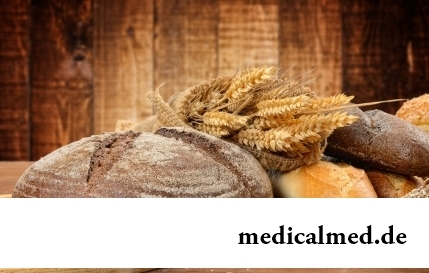
There is an opinion that at low temperatures safety of products is ensured longer and better thanks to what the refrigerator is considered the most suitable place for storage of food. In most cases it is fair, however there is a number of products for which low temperatures – the main reason of their premature damage. Storage in the refrigerator leads to their bystry rotting, emergence of a mold, is followed by loss of vitamins and tastes. What products it is better to remove...
Section: Articles about health
On the head of the person about one million hair follicles, or as they are called still, hair bulbs are located. At the moment he is born...
Section: Articles about health
Heart disease and blood vessels lead to disturbance of blood supply of bodies and fabrics that involves failures in their work, deterioration in health of the person, decrease in its working capacity and standard of living. Annually such perishes from pathologies more...
Section: Articles about health
The depression not without reason is considered one their main troubles of our century: for scientific and technical progress, acceleration of rate of life and a surplus of information of people it is forced to pay with stresses, negative emotions and weakening of protective forces of an organism. As a result widely the states which are characterized by the increased uneasiness, falling of interest in life, spiritual and physical discomfort extend....
Section: Articles about health
White teeth and the Hollywood smile – a dream of many people. Long time was considered that a plaque on teeth and change of their color – destiny of those...
Section: Articles about health
The body of the person almost for 60% consists of water. It is so important for normal functioning of an organism that loss of only one and a half percent of liquid already leads to the most unpleasant effects. The problems connected with deficit of water can overtake and...
Section: Articles about health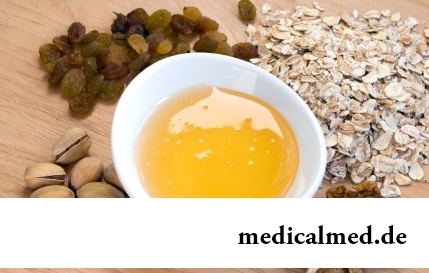
Let's begin with the fact that a separate illness which is called "adjournment of salts", just does not exist. In practice this household name of disbolism leading to development of a number of diseases. Pathological process consists that in an organism there is an accumulation of salts of uric acid (as a rule, owing to failure of a water salt metabolism or insufficiently effective work of secretory system)....
Section: Articles about health
The cosmetics intended for improvement of a condition of skin, nails and hair are used by each woman. Expenses on регуля...
Section: Articles about health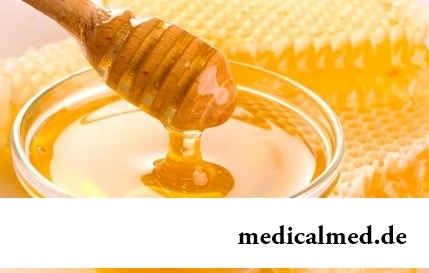
About 20% of the population of our planet have a hypertension (permanent increase in arterial pressure). This disease has an adverse effect on the standard of living, reduces working capacity, and in the absence of systematic treatment threatens with such complications as a heart attack...
Section: Articles about health
The medicine promptly develops, and the fact that else quite recently it seemed by miracle can now. We are not surprised any more to the fact that people with artificial joints and extremities can play sports, organ transplantation became a routine, and the latest cancer medicine allowed to achieve reduction of mortality in tens of times. Miracles of plastic surgery thanks to which people in 60 years are in the flower of beauty and freshness, too not a sensation any more....
Section: Articles about health
